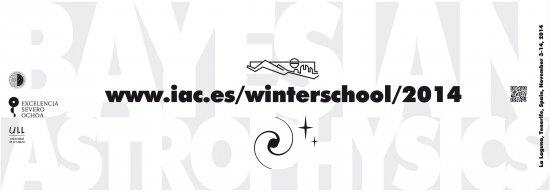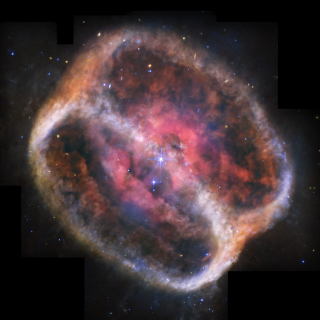What have Astrophysics and Insurance Companies in common, or the search for exoplanets and the prediction of the results of elections? The answer is Bayesian inference, which will be the theme of the XXVI edition of the Canary Islands Winter School in Astrophysics, organized by the Canarian Astrophysics Institute (IAC). Around 50 young researchers, doctoral students, and recent postdocs, from various countries will attend this school for specialists, which will last from 3rd to 14th November, at the IAC Headquarters in La Laguna. The type of statistics which is referred to in the school´s name “Bayesian Astrophysics” is used to study the Universe, and also to calculate the insurance premium which we have to pay on our car, or to predict the results of an election. The courses will be given by seven experts in these predictive techniques.
Bayesian Inference
“We scientists” explain Andrés Asensio Ramos and Íñigo Arregui, the researchers at the IAC who are organizing this Winter School, “ unravel the secrets of nature using physical models based on our present knowledge of the Universe. These models enable us to make predictions which must then be compared with new observations. To make this comparison astrophysics today has at its disposal a valuable mathematical tool developed during several hundred years, known as “Bayesian Inference” which helps to interface the data with the models.
Bayesian inference is so called because it uses an updated version of the theorem first proposed in the XVIII century by the British mathematician, the Reverend Thomas Bayes (1702-1761). The French physicist and mathematician Pierre Simon Laplace (1749-1827) continued theoretical development of this theorem, although he did not reach the point of applying it practically. The idea was taken up again half way through the XX century although its complexity (it needs very complicated integrals) made it impossible to use until the 90’s which was when computers were developed. “That is why we are in early days of the application of this method” says Asensio Ramos.
Invited lecturers
Among the lecturer at this year’s course is Jose Miguel Bernardo, Professor of Statistics at the University of Valencia, and founding member of the International Association for Bayesian Analysis. This mathematician, who uses Bayesian inference to make electoral predictions, and has worked for the media and for political parties inside and outside Spain, will give a lecture on the subject on November 11th in the Museum of Science and the Cosmos, belonging to Museums of Tenerife.
Also among the invited lecturers is the cosmologist Roberto Trotta of Imperial College, London, who has just published The Edge of the Sky (awaiting translation into Spanish). This popularization book narrates “ the complete history of the Universe” using as the guiding thread a student´s search for dark matter, and employing only the thousand most common words in English.
The other lecturers are Brendon J. Brewer (University of Auckland, New Zealand) and Tom Loredo (Cornell University, USA) who will be teaching the students the specific techniques of Bayesian inference as used in Astrophysics. Phil Gregory ( University of British Columbia, Canada), Dustin Lang (Carnegie Mellon University USA) and Jean´Luc Starck (Astrophysics Service CEA/Saclay, France) will deal respectively in their course with applications to the search for extrasolar planets, to compiling catalogues of the Universe on large scales, and to the treatment of astronomical images.
Organising Committee: Andrés Asensio, Íñigo Arregui, Antonio Aparicio, and Rafael Rebolo
Secretary: Lourdes González.



